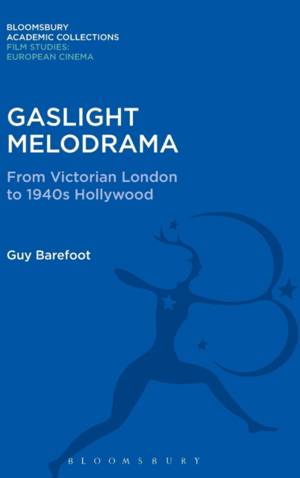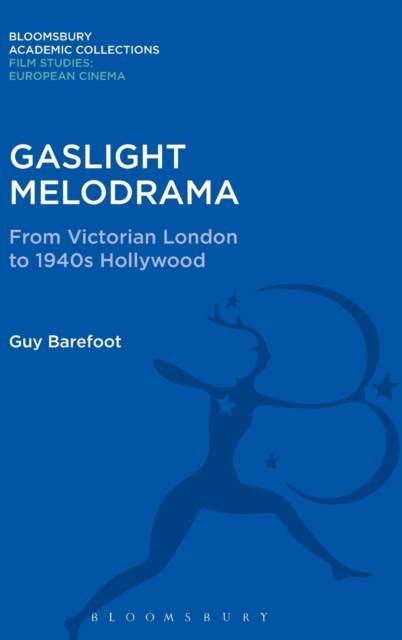
Bedankt voor het vertrouwen het afgelopen jaar! Om jou te bedanken bieden we GRATIS verzending (in België) aan op alles gedurende de hele maand januari.
- Afhalen na 1 uur in een winkel met voorraad
- In januari gratis thuislevering in België
- Ruim aanbod met 7 miljoen producten
Bedankt voor het vertrouwen het afgelopen jaar! Om jou te bedanken bieden we GRATIS verzending (in België) aan op alles gedurende de hele maand januari.
- Afhalen na 1 uur in een winkel met voorraad
- In januari gratis thuislevering in België
- Ruim aanbod met 7 miljoen producten
Zoeken
Omschrijving
In 1945, a year when American crime films were apparently moving out on to the streets of contemporary Los Angeles and New York, one reviewer noted the emergence of a 'cycle of mystery and horror pictures placed in the gaslight era of the turn of the century.' For another critic, it seemed that for Hollywood there was 'no world of today save the world of London by gaslight'.
In Gaslight Melodrama, Guy Barefoot examines the films that gave rise to such comments, and the pattern of discourse that gave rise to such films. The book's main focus is provided by 1940s Hollywood melodramas such as Gaslight, Dr. Jekyll and Mr. Hyde and Hangover Square. It also discusses a related cycle of British films that located murder and melodrama in Victorian or Edwardian settings, and then looks beyond cinema to the Gothic novels of the 18th century, 19th century discussions of gas lighting in street, home and theatre, and ambivalent 20th century responses to the Victorian era. Combining close analysis of particular film texts with attention to cinema's cultural context, Gaslight Melodrama provides an exploration of the ways in which the past has been the site of contested meaning, and an examination of the network of melodramatic narratives embedded within familiar and lesser-known examples of classical Hollywood cinema.
In Gaslight Melodrama, Guy Barefoot examines the films that gave rise to such comments, and the pattern of discourse that gave rise to such films. The book's main focus is provided by 1940s Hollywood melodramas such as Gaslight, Dr. Jekyll and Mr. Hyde and Hangover Square. It also discusses a related cycle of British films that located murder and melodrama in Victorian or Edwardian settings, and then looks beyond cinema to the Gothic novels of the 18th century, 19th century discussions of gas lighting in street, home and theatre, and ambivalent 20th century responses to the Victorian era. Combining close analysis of particular film texts with attention to cinema's cultural context, Gaslight Melodrama provides an exploration of the ways in which the past has been the site of contested meaning, and an examination of the network of melodramatic narratives embedded within familiar and lesser-known examples of classical Hollywood cinema.
Specificaties
Betrokkenen
- Auteur(s):
- Uitgeverij:
Inhoud
- Aantal bladzijden:
- 240
- Taal:
- Engels
- Reeks:
Eigenschappen
- Productcode (EAN):
- 9781474290357
- Verschijningsdatum:
- 6/10/2016
- Uitvoering:
- Hardcover
- Formaat:
- Genaaid
- Afmetingen:
- 156 mm x 234 mm
- Gewicht:
- 517 g

Alleen bij Standaard Boekhandel
+ 508 punten op je klantenkaart van Standaard Boekhandel
Beoordelingen
We publiceren alleen reviews die voldoen aan de voorwaarden voor reviews. Bekijk onze voorwaarden voor reviews.









